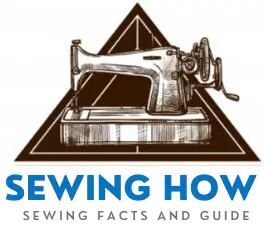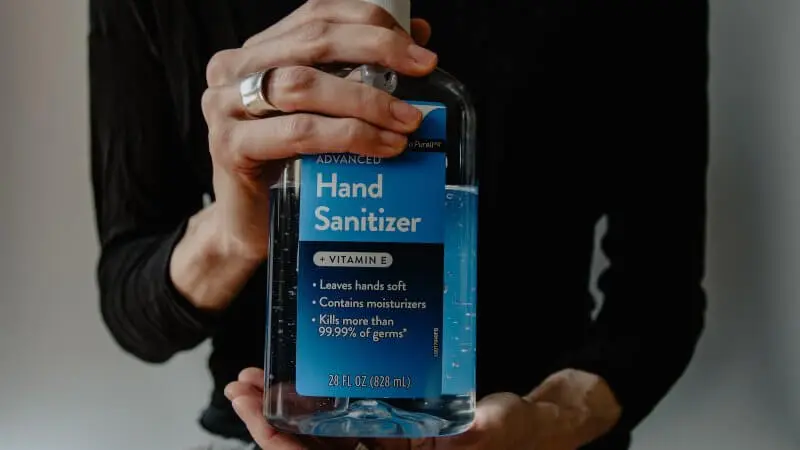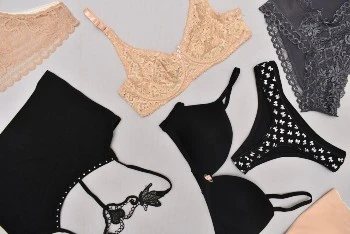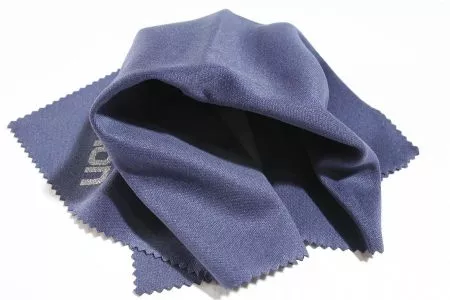In the fashion world, chiffon is seen as a symbol of elegance. Therefore, the fabric is mainly used to make evening wear, blouses, and nightwear intended for special occasions. However, similar to other materials, chiffon has its pros and cons. So, what are the advantages and disadvantages of chiffon?
Chiffon has a luxury feel, resists wrinkles, and is elastic. It is comfortable, moisture-wicking, durable, resistant to pilling, thermoregulating, has a pleasing drape, and resists mildew. The disadvantages of chiffon are that it stains easily, requires special care, is challenging to cut and sew, and can be too revealing. In addition, it is expensive, is highly flammable, and is not sustainable, specifically when chiffon is made from synthetic fibers.
Let’s look at the properties of chiffon, its common uses of chiffon, and its strengths and weaknesses of chiffon.
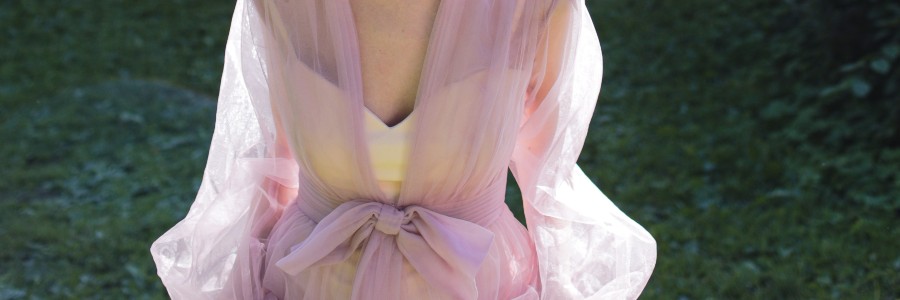
What Is Chiffon & How Is It Made?
Contrary to common perception, chiffon is not a fabric. Instead, it is a weaving process that produces lightweight, bare weave fabric with a slight shine—the weave results in tiny wrinkles that can be rough to touch.
Commonly, chiffon refers to a wide variety of various types of fabrics that have similar features. The material is sheer, which implies that chiffon is light and semi-transparent with a basic weave.
To make chiffon, yarns are woven using an alternative technique. In the weaving process, high-twist yarns are used. Thus, the yarns are alternatively twisted. As a result, the chiffon has a light crumpling effect in various directions, and there is light puckering of the fabric.
Synthetic chiffon is made from nylon and polyester fibers. This chiffon is affordable, durable, and stain-resistant. Cotton and silk fibers are commonly used to make natural chiffon.
Silk chiffon is considered high-end, and a premium option since it has a smooth texture, is strong, and has a sparkle. Even if natural and synthetic chiffon can be dyed to any color, chiffon made from synthetic fibers is easy to dye since synthetic fabrics take dyes quickly.
Advantages And Disadvantages of Chiffon Fabric
Initially, chiffon was made in France and was made with silk fibers. With time, chiffon production spread to other parts of the world. However, due to shortages in silkworms used to make silk, producers of chiffon started to look for alternative fibers to be used in making chiffon.
In 1938, the first chiffon made from other fibers apart from silk was introduced. The chiffon was made from nylon fibers. In 1958, chiffon made from polyester fibers was developed. However, the polyester chiffon feel did not match the feel of silk chiffon.
Here are some of the prominent features of chiffon.
Advantage Of Chiffon

Luxury Feel
Due to how chiffon fabric is made, chiffon has a luxury feel. Specifically, silk chiffon is soft when it rubs the skin. The soft feel of silk chiffon is unique and cannot be matched by any other fabric. Due to its luxury feel, Chiffon is used to make garments worn on special occasions.
Elastic
Chiffon fibers are elastic. Thus, when one wears chiffon clothing, the cloth will hug the figure well. However, it is essential to note that synthetic chiffons such as nylon or polyester chiffon might be stiffer than silk chiffon.
Does Not Wrinkle Easily
Chiffon made from polyester fibers does not wrinkle easily since polyester fibers are resistant to wrinkles. However, if your chiffon is made from silk, it can wrinkle easily as silk is susceptible to wrinkles, especially when not stored well.
Comfort
When wearing any fabric, the material must be comfortable. Otherwise, an itchy fabric can irritate the skin and even ruin your day. Chiffon is light, soft, and silky on the skin.
Moisture-Wicking
Due to how it is made, Chiffon has moisture-wicking properties. So if you wear chiffon clothing on a hot day, Chiffon fabric will draw any moisture of your sweat away from the skin and ensure that it evaporates through the fibers.
When choosing clothes to wear during summer, you have to consider chiffon fabrics since the high breathability of chiffon means that the material will cool your body on hot days.
Durable
Chiffon made from synthetic fibers such as silk and nylon is durable. As a result, you can be assured that as long as you take good care of your chiffon fabric, your chiffon garments can last a long time.
Likewise, silk chiffon is also durable, even though polyester and nylon chiffons are more durable than silk chiffon.
Good Drape
When discussing the drape of a fabric, it entails how the fabric hangs on the body under its weight, the properties of the fibers in the material, how fibers are woven, the weight of the fibers, and the finishing treatment.
Chiffon has a good drape that makes it one of the best options for evening gowns. Moreover, the fabric has an excellent character by holding a little bit of its structure.
Pilling Resistant
Polyester and silk chiffon are the most common types of chiffon. These chiffons resist pilling since polyester and silk fibers are not prone to pilling. Thus, when you have a chiffon garment, you can wear the garment many times without it pilling.
Thermoregulating
Chiffon regulates temperature naturally. Thus, chiffon clothing will keep you cool in summer and comfortable in winter. The fabric can do that since its thin and lightweight fibers permit better air circulation.
Thermoregulating property of chiffon implies that if you have chiffon bedding, you will not be required to change your duvets in summer when it gets hot. Chiffon beddings will remain breathable at all times.
Mildew Resistant
Chiffon made from synthetic fibers is resistant to mildew. As a result, the mildew resistance property of synthetic chiffon contributes to the fabric’s durability.
In addition, chiffon made from silk is also mildew resistant, as animal fibers are more resistant to mildew than plant fibers.
Disadvantages Of Chiffon

Can Stain Easily
Due to the structure of chiffon fibers, the fabric stains easily. For example, if you sweat when wearing chiffon, the sweat can weaken the fibers and fade the chiffon’s color.
Moreover, if your chiffon is splattered with water, the splatters might prove challenging to remove, and if not careful, you could have a permanent stain on your expensive chiffon garment.
Demands Special Care
While you can wash, dry, and iron other fabrics without requiring much care, chiffon fabric is never the case. If you are not careful when cleaning, drying, or ironing your chiffon garments, you might ruin the garments.
If you are not sure how to wash, dry, and iron your chiffon garments, it is recommended that you enlist the services of a professional cleaner to clean your chiffon garments.
Difficult To Sew
The smooth feel and lightweight properties of chiffon make it difficult for novices to cut and sew chiffon.
To effectively cut chiffon without ruining the fabric, you can place two pieces of paper towel between the material and use sharp scissors to cut the fabric. Moreover, a sharp needle should always be used to sew chiffon.
Can Be Too Revealing At Times
Even if chiffon fabric is supposed to be lightweight and have some sheer, the fabric can sometimes be too revealing and leave one in a compromised position.
Indeed, when chiffon dresses are made without a lining and worn without layering, the dresses are often too revealing.
Expensive
When compared to other fabrics, chiffon is expensive. Indeed, even when Chiffon is made from synthetic materials such as polyester, it is still costly.
Highly Flammable
Chiffon is highly flammable, and as such, it can cause severe injuries if one catches fire when wearing chiffon clothing. Indeed, if chiffon fibers were to melt on a person, the burning fibers would attach to the skin, seeking medical help.
Likewise, chiffon has to be ironed with a low-temperature setting. If a high temperature is used, it will ruin the garment. Moreover, if you dry chiffon at a high temperature in the dryer, you will most likely ruin your garments.
Comfortability Concerns
When chiffon fabric is worn without layering, many people have complained that the fabric is rough on the skin. In addition, chiffon also holds a static charge which can be uncomfortable.
What Can You Use Chiffon For?
Now that you have understood the strengths and weaknesses of chiffon, you could be wondering what chiffon can be used to make. Chiffon fabric is mainly used in the garment industry to make different products,
Chiffon is used in:
Nightgowns
Evening wear
Blouses
Scarfs
Dresses
Bedsheets
Examples Of Chiffon Products
Here are specific examples of chiffon uses.
Dresses – The lightweight, drape, and sheer property of chiffon make it an ideal fabric to make dinner dresses.
Blouses – Chiffon blouses are ideal for hot summer days since they ensure that the body is kept cool during hot days.
Beddings – Chiffon beddings are soft and give a comforting feel. Moreover, the bedding can regulate the body temperature, ensuring a comfortable sleep.
Is Chiffon Good For Hot Weather?
During hot weather, the temperatures will be high. As a result, you are likely to sweat profusely, especially if you are outside for a longer period. In such situations, you need lightweight, moisture-wicking, and breathable clothing.
Chiffon is suitable for hot weather since it is lightweight, moisture-wicking, and breathable. The lightweight property of chiffon implies that air will be able to pass the fabric and get to the skin, thus keeping you cool.
The moisture-wicking property of chiffon implies that the fabric will draw out moisture from your body through the fabric to the exterior surface so that the moisture can evaporate. That process will ensure that you will always be cool, even if you sweat.
The tiny hollow gaps on chiffon fabric make the fabric breathable. As a result, the gaps will ensure that chiffon fabric easily consumes and expels body perspiration.
Is Chiffon Sustainable?
Whether chiffon is sustainable will be determined by the type of chiffon fabric you have. Chiffon made from silk is sustainable since silk is a biodegradable natural fiber.
Polyester chiffon, nylon chiffon, and other chiffon made from different synthetic fabrics are not sustainable since they are derived from chemicals. Indeed, fossil fuel in the synthetic fabric makes chiffon made from synthetic fibers unsustainable.
Since synthetic fabrics are not biodegradable, increased chiffon production results in increased plastic waste in different landfills around the globe.
Fast fashion, which has gained popularity in the last few decades, uses a lot of chiffons made from synthetic fibers. Therefore, when you buy cheap chiffon clothing, you can be assured that you purchase a garment made from synthetic chiffon fibers.
Sustainable chiffon clothing will be expensive compared to synthetic chiffon clothing. However, by reading the care tag of the clothing, you will be able to find out whether the chiffon clothing is made with natural or synthetic fabrics.
Conclusions
As discussed in the article, the major advantages of chiffon fabric are soft, elegant, lightweight, moisture-wicking, and breathable. However, the biggest disadvantage is that it is expensive, delicate, and harmful to the environment.
I hope that this article made you better understand the advantages and disadvantages of chiffon. Feel free to share the article with your friends.
